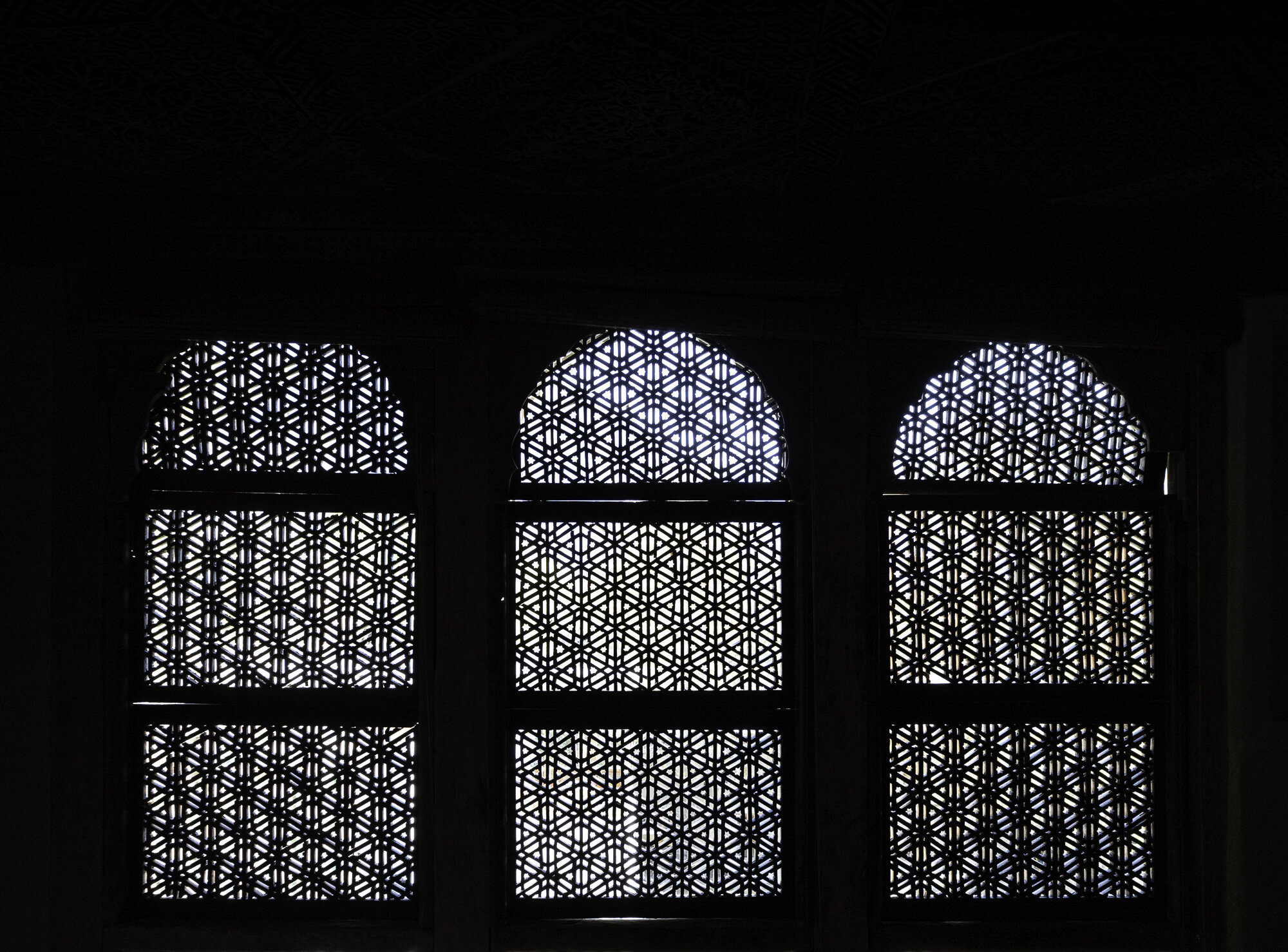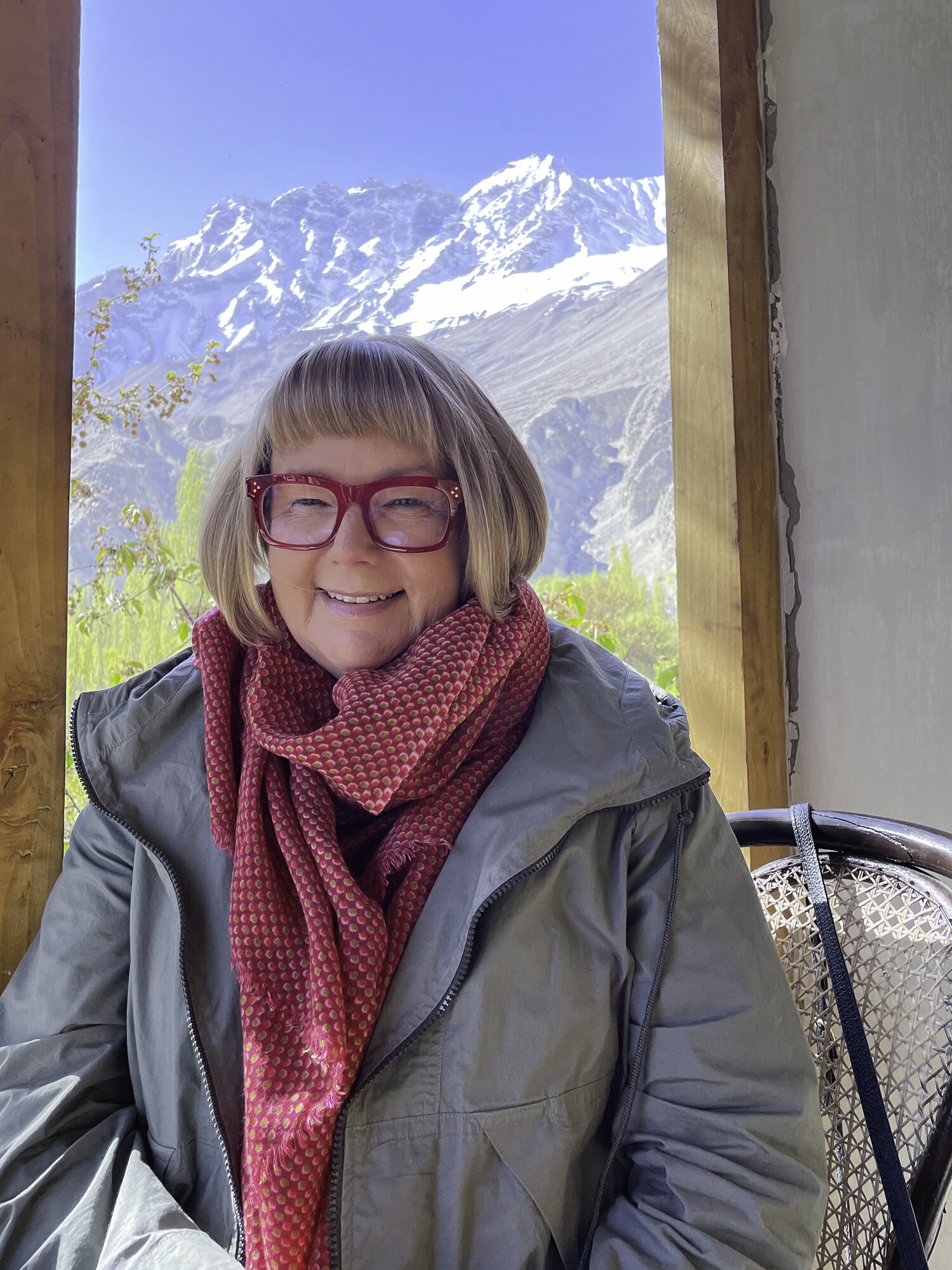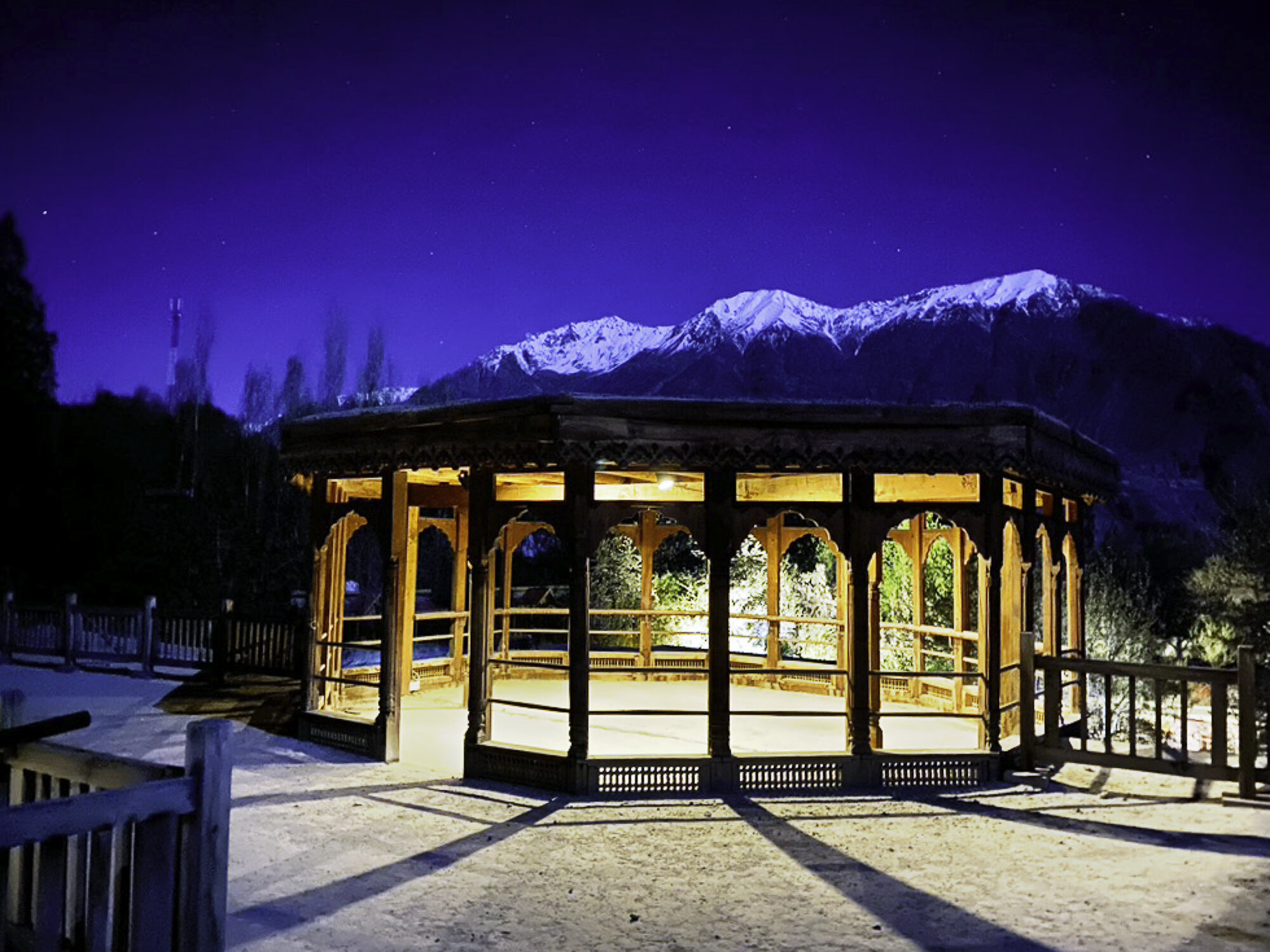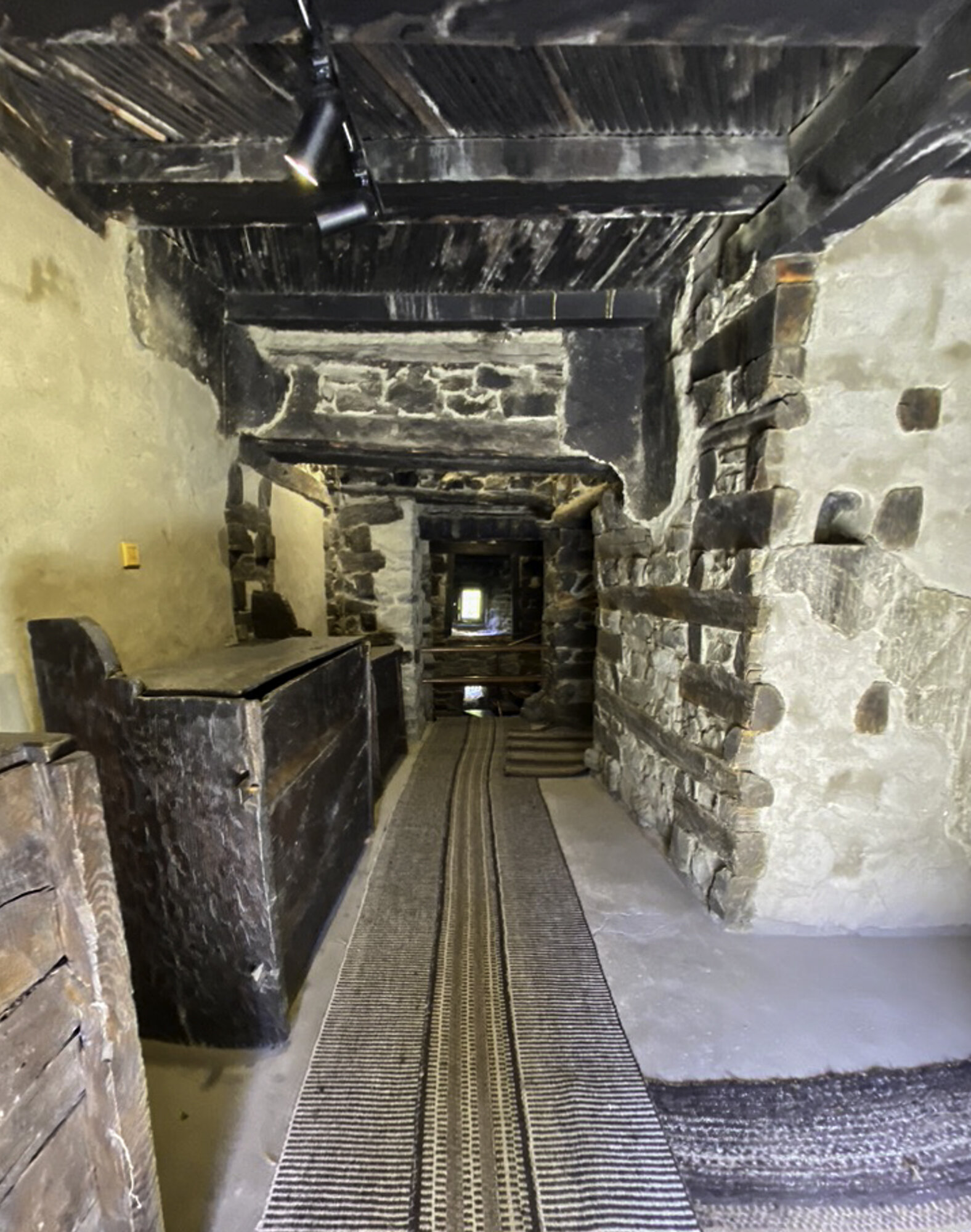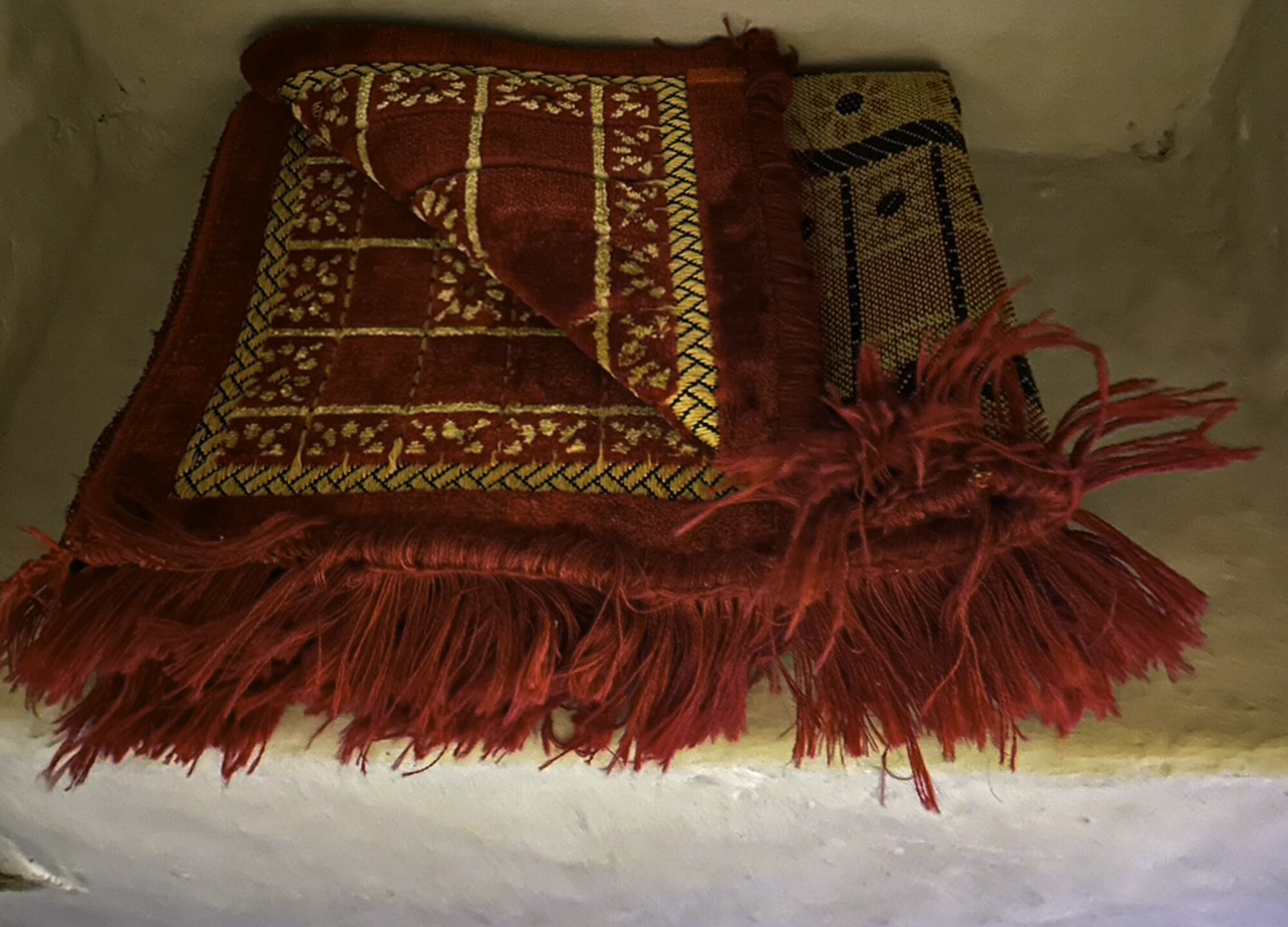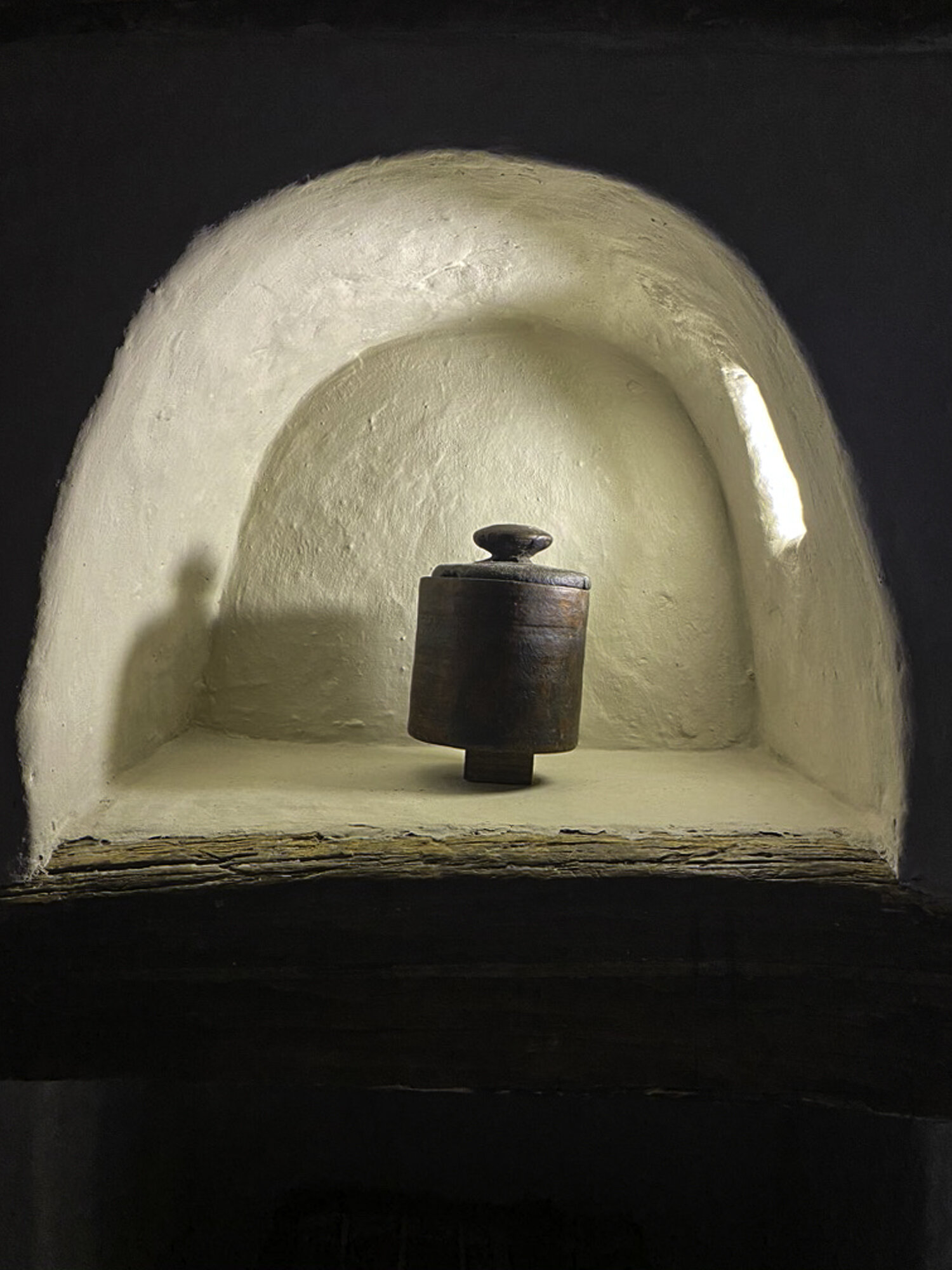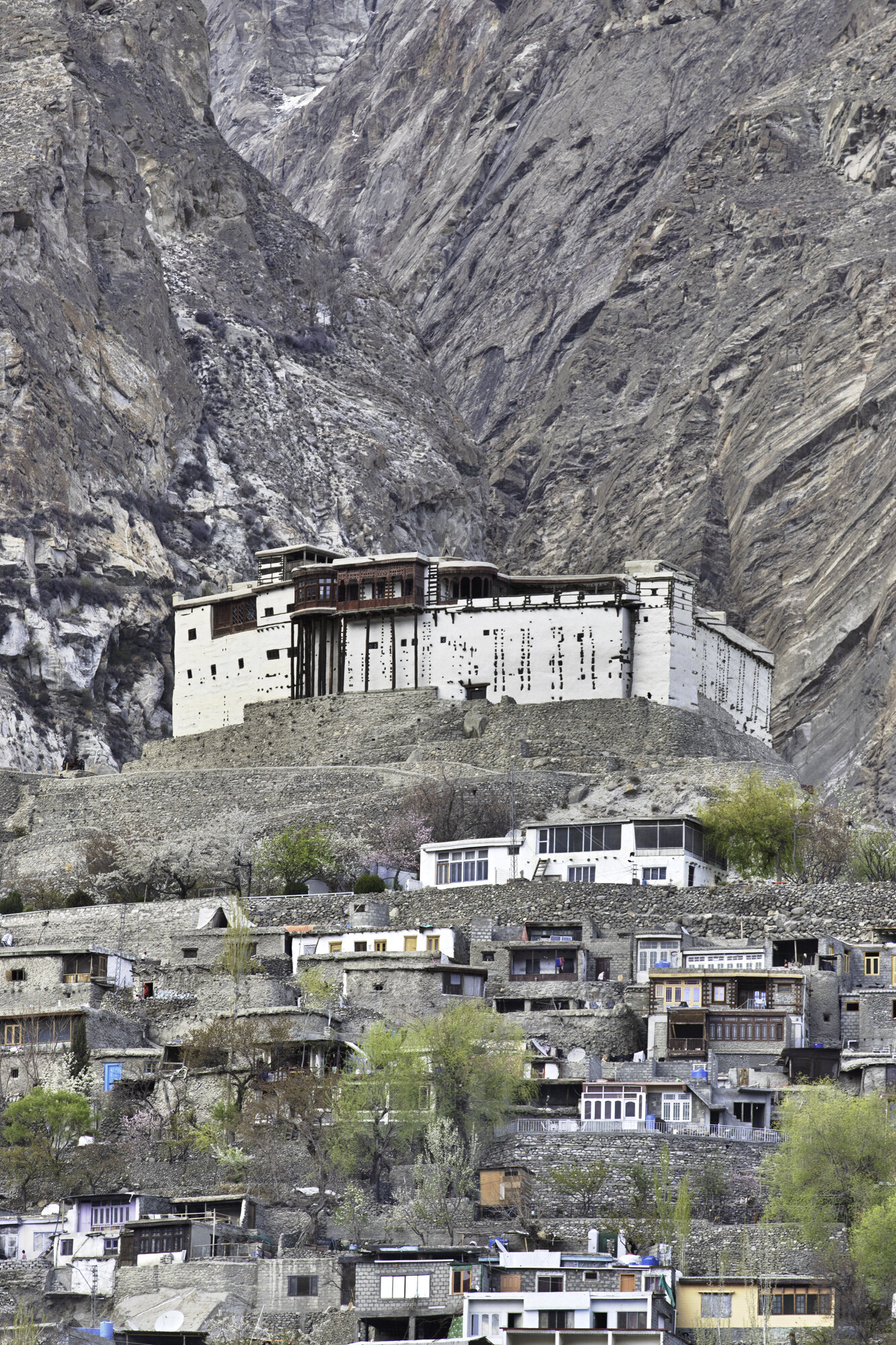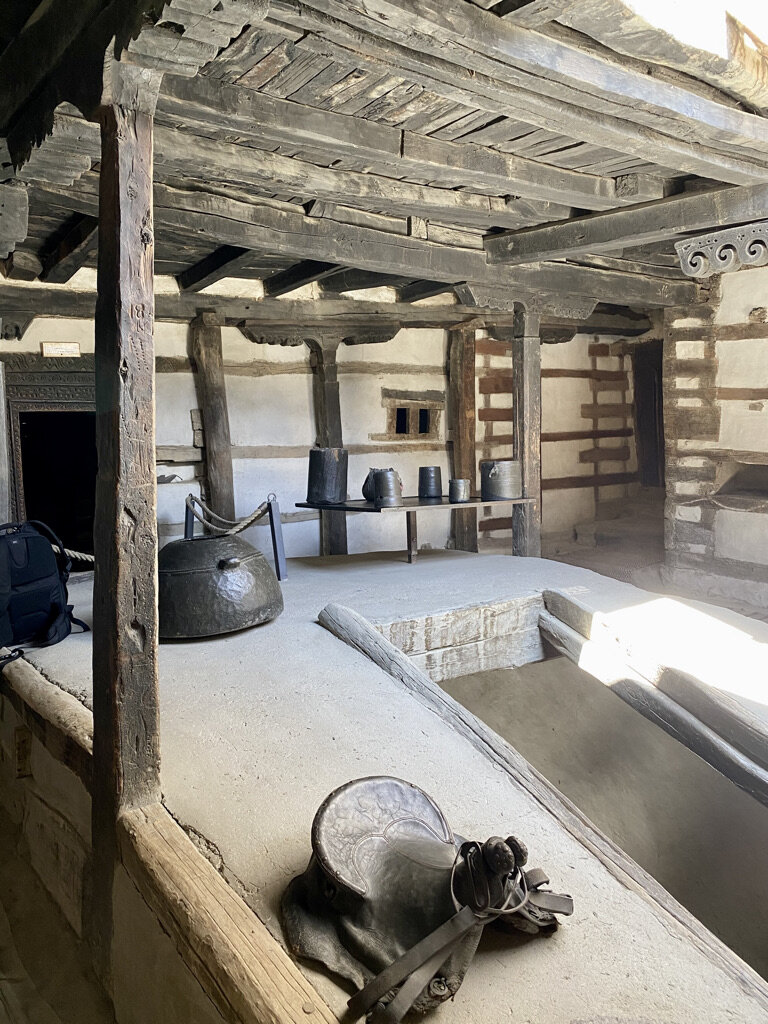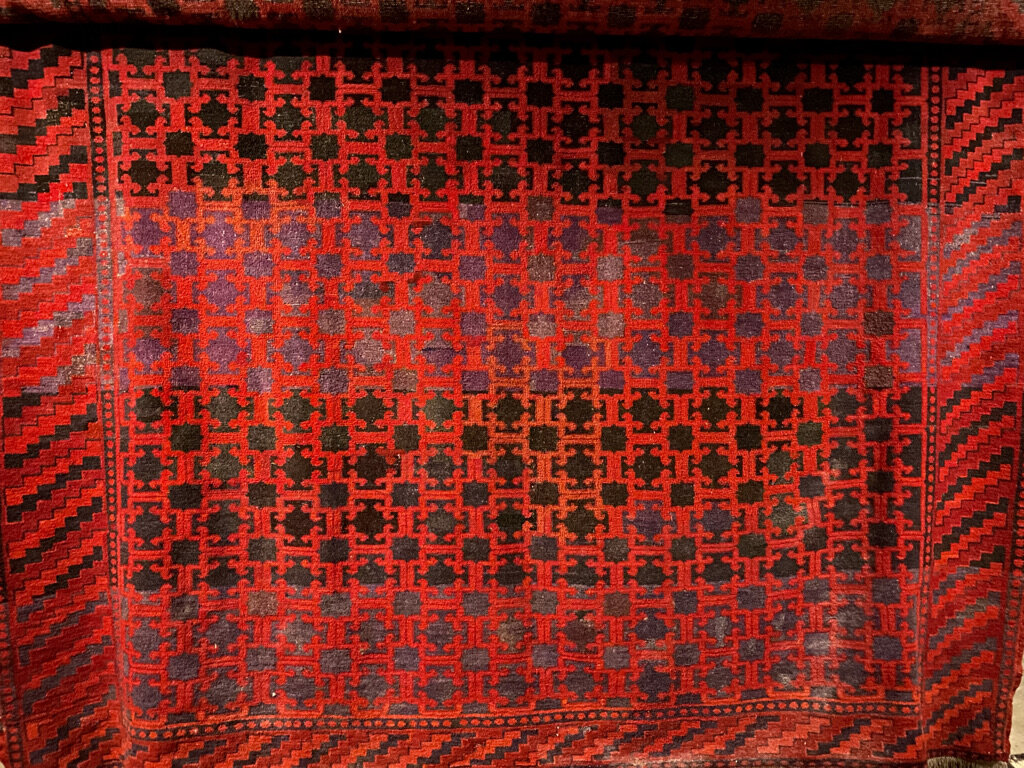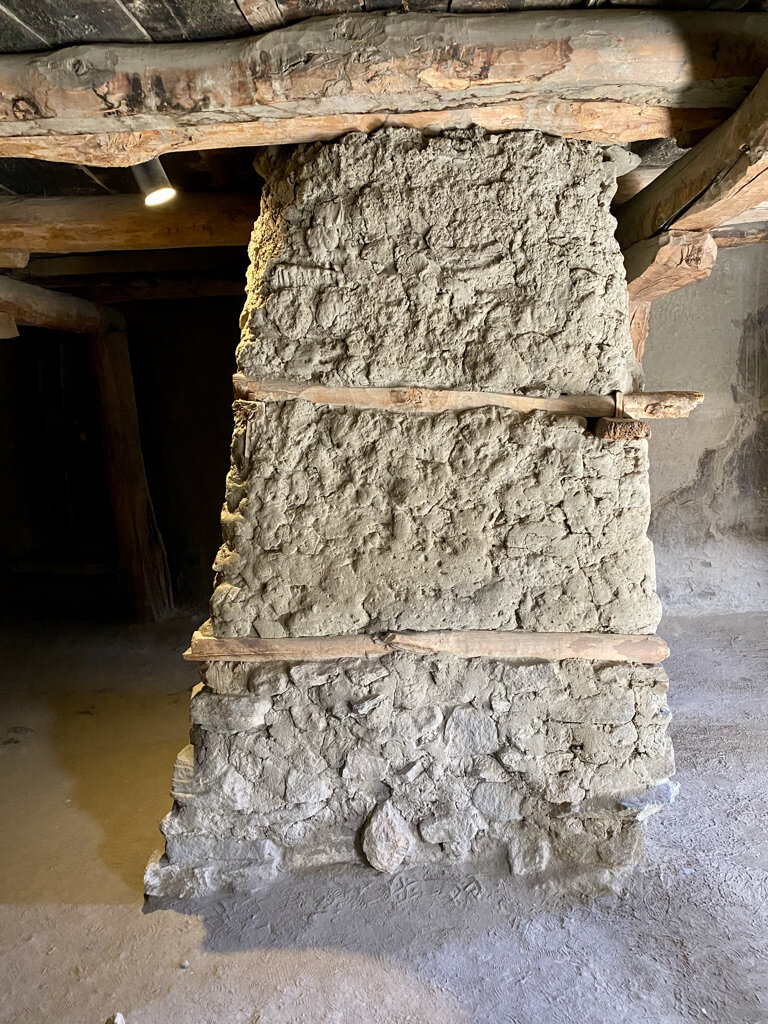Postcards from Pakistan
Postcard from Khaplu Fort - where the stone stopped rolling
During our drive across Gilgit Baltistan we’ve been able to see some amazing forts: Baltit and Altit Forts in Hunza; Shigar Fort and now Khaplu Fort (see my other blogs on each of the forts).
Khaplu Fort, like the other forts in the region, has been restored by the Aga Khan Cultural Service Pakistan. This fort is yet another example of painstaking restoration. The fort is set in Khaplu Village near the banks of the Shyok River and is surrounded by fields and orchards. In the village you can stand and turn and have 360 degree mountain views. You can see Masherbrum, K-6, and K-7 and other mountains with beautiful names like Sherpi Kangh, Siachen and Saltoro Kangri.
The local name for Khaplu Fort is Yabgo Khar, also known as ‘The Fort on the Roof’. The local story is that a stone was rolled down from a nearby mountain and where the stone stopped they built the fort. Built in the 1840’s for the local ruler Yabgo Raja Daulat Ali Kahn, it replaced an older fort. The fort showcases the many different styles of the region: Tibetan; Balti; and Kashmiri.
Today the Fort is run by Serena Hotels. We stayed for three nights to explore the region. We had a wonderful stay there. What an experience to drink tea on an intricately carved wooden balcony and to sit on the top terrace and watch the moon rise over the mountains. Khaplu Fort, where the stone stopped rolling, and, if you can, you should stop there too.
Main Gate
Entrance to Khaplu Fort
Khaplu Fort garden
Khaplu Fort restaurant
A lovely place to sit and enjoy a meal
Wooden lattice work
Doors open to a spectacular balcony and view
We sit and enjoy our tea
Ceiling detail
Door detail
Everywhere you look there are interesting details and objects. These boots a reminder that the sun doesn’t always shine here.
Ceiling detail
Our favourite breakfast spot
A little cool in the mornings but we had to sit outside as it was such a gorgeous view
Night falls
A romantic dinner for two was organised and we sat and watched the moon rise
Postcard from Shigar Fort
After a very long day driving along the Karakoram Highway (see my previous blog on this amazing drive) we arrive in Shigar. We are staying at Shigar Fort. We stand in the garden of the fort and the gentle buzzing of bees in the blossoms and bleating of goats in the village below is in peaceful contrast to the last nine hours of danger and dust.
Shigar Fort was built in the 17th century and was once the residence of the Raja of Shigar. It is known locally as ‘Kong-Khar’ or ‘Fort on Rock’ as the original fort was built around a cone shaped rock. The fort now consists of three buildings built close to each other. The oldest structure is over 400 years old. The other two buildings were built around 100 and 150 years later. The fort was restored by the Aga Khan Cultural Service Pakistan from 1999 to 2004 and was then bought by the Serena Hotel chain. We were fortunate enough to be staying in one of the oldest rooms in the original fort. Standing outside the fort it is easy to see the building method of alternating stone and wood. Inside you can see Kashmiri door and ceiling details.
The fort sits in tranquil gardens with one garden offering relaxed outdoor seating and dining and another with a baridari. A baridari is a pavilion with usually twelve doors (bara is Urdu for twelve and darwaza is Urdu for door) to let air flow through. The Shigar Fort baridari is surrounded by an ornamental pond. It looks beautiful and would have been a perfect setting for the Raja to enjoy music, poetry or somewhere cool to sit.
Shigar Fort, a place to slow down, relax and be treated like a Raja.
Shigar Valley, we arrive as the sun begins to set
Shigar Fort from one of the gardens
Entrance to the hotel, in the middle of the photo you can see the cone shaped rock, where the fort gets its local name
These are the stairs leading up to our room
A day bed
The restoration has been done so well
View from our room
The baridari
View from inside the baridari
What a spot to have breakfast
View from the top of the fort
Postcard from Baltit Fort
When you first arrive in Hunza you can see Baltit Fort sitting high above the valley with a wondrous backdrop of snow-covered mountains. It is close to Altit Fort (the subject of my previous blog) but where Altit sits next to the Hunza River, Baltit Fort seems to float in front of the mountains and the Ultar Glacier.
Be ready for a steep climb through the town of Karimabad to reach the entrance to Baltit Fort and then be ready to climb more steps to get to the front door and yet more steps inside. The effort is worth it. Baltit Fort is an impressive building with even more impressive views of the whole Hunza Valley.
The site was obviously chosen for its strategic importance for security, water and trade. The Fort was built 700 years ago on a flattened rock spur and floors and rooms have been added over time. Notable changes came about in the 16th century when the local Mir (king) married a Baltistan princess. As part of her dowry renovations were made by Balti craftsmen and you can see Tibetan influences in the shape of the ceilings and on door supports.
In my last blog on Altit Fort I wrote about two princes, Prince Shah Abbas and Prince Ali Khan and their disagreement that led to the death of the younger prince. Prince Shah Abbas made Baltit Fort the new seat of power for the region. It remained the palace until 1945 when the Mir built a new palace close by.
Left empty and in need of serious repairs there was concern that the Fort would become a ruin. Six years of renovations were completed in 1996 by the Aga Khan Trust for Culture. The renovations have been done exceptionally well and have kept the original feel of the Fort. From the soot stained and charred ceilings in the kitchens to the colourful mosaic windows open to the cool wind from the surrounding mountains you can start to imagine what life must have been like here.
Baltit Fort at the foot of the Ultar Glacier
Baltit Fort sits on a flattened spur of rock
Walking past traditional houses in Karimabad
History around and above every corner
Water was and still is a valuable resource. Water channels were built across Karimabad
Side view of Baltit Fort with clear lines of wood and stone
Just a few more steps to get inside the Fort
Local with traditional woollen Gilgiti cap with shaati feather
Maintenance of Fort and surrounding buildings is hard work as all stone has to be carried by foot
Cannon from 1863
View of Hunza Valley from top terrace
Tibetan inspired ceiling above the kitchen
Centuries of soot and smoke
What do you think this box was used for?
Ceiling detail
Traditional Hunza woven rugs
In the mid ground you can see Altit Fort
Postcard from Altit Fort - a thousand year old fort with a thousand foot drop
As you can see from this photo Altit Fort sits high above the Hunza River. There is a straight, 1000 foot drop from the fort to the river below. The Fort started as the traditional home of the local Mir, or king. It sits in a strategic position overlooking the Ulter Glacier and the Hunza Valley. The Fort’s prime position made sure that the Mir was ready against attack at all times.
The Fort has been wonderfully restored by the Aga Khan Trust for Culture and the Norwegian Government from 2006 to 2010. The Fort is built of wood, stone and mud. The use of alternating wood with stone made it able to withstand earthquakes. Looking up at the Fort you realise that it would be difficult to build today, let alone 1000 years ago.
Inside the Fort you can find rooms with furniture and belongings giving an idea of what life might have been like for the Mir and his family. Each room has intricately carved door lintels and window shutters. Doors and ceilings are low, windows are small to keep in the heat.
The Fort has a fascinating history revolving around princes, politics and pillars. Around 1540 a new fort, Baltit Fort, was built in Hunza (the subject of my next blog). Prince Shah Abbas moved to Baltit Fort, and it became the new capital of Hunza. Prince Shah Abbas’ younger brother, Prince Ali Khan, remained at Altit Fort. The two brothers fought and it is believed that Prince Shah Abbas buried his younger brother alive in a pillar in one of the rooms in Altit Fort. This is not the only story of death at the Fort. Altit Fort has one tower ‘Shikiari’ or ‘Hunters Tower’. Prisoners were held in dungeons and sentencing could involve being thrown from the tower over the cliff.
However today you will find it a peaceful place. After spending time looking around the Fort you can enjoy a walk through the beautiful gardens and stop at Kha Basi, a former Mir’s winter residence, now a café with great views.
As we were walking around the garden, we heard some wonderful music. Set in a corner of the garden is a music school where students can learn to sing and play traditional Pakistani instruments. We had been walking past during one of their rehearsals and were fortunate enough to be invited into the school to listen to the students play. As a bonus our travel guide and our guide from the fort got up to dance. It was a wonderful end to our visit to Altit Fort – an afternoon of history, politics, music and culture.
Altit Fort built closely around the rock base
Front door to Altit Fort
The pillar!
The kitchen
View from the top of the Fort across the Hunza Valley
Old Altit Town sitting under the Fort













